Research activities
Coronary stent design
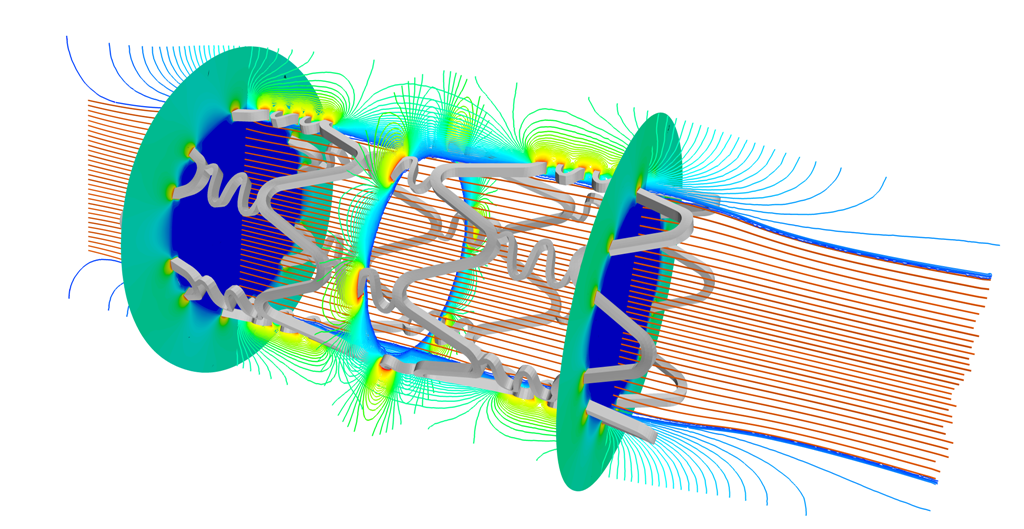 This research is focussed on multidisciplinary and multiobjective design and optimisation of coronary stents. Coronary stents are cylindrical mesh-like structures that are deployed to recover the shape of narrowed (diseased) artery segments. The design objective is to reduce the adverse biological responses, in-stent restenosis and thrombosis , associated with the stenting procedure which can often lead to fatality or need for further treatment. The clinically relevant performance metrics are calculated through various complex engineering simulations—balloon expansion followed by haemodynamics and drug-distribution analyses—to assess the effect of stenting. These computationally expensive simulations are employed to construct Gaussian process (Kriging) models that act as cheap fast-to-compute surrogates to assist evolutionary optimisation (both constrained and multiobjective) methods that typically require a large number of objective function evaluations.
This research is focussed on multidisciplinary and multiobjective design and optimisation of coronary stents. Coronary stents are cylindrical mesh-like structures that are deployed to recover the shape of narrowed (diseased) artery segments. The design objective is to reduce the adverse biological responses, in-stent restenosis and thrombosis , associated with the stenting procedure which can often lead to fatality or need for further treatment. The clinically relevant performance metrics are calculated through various complex engineering simulations—balloon expansion followed by haemodynamics and drug-distribution analyses—to assess the effect of stenting. These computationally expensive simulations are employed to construct Gaussian process (Kriging) models that act as cheap fast-to-compute surrogates to assist evolutionary optimisation (both constrained and multiobjective) methods that typically require a large number of objective function evaluations.
Read more ...
Patient-specific haemodynamics
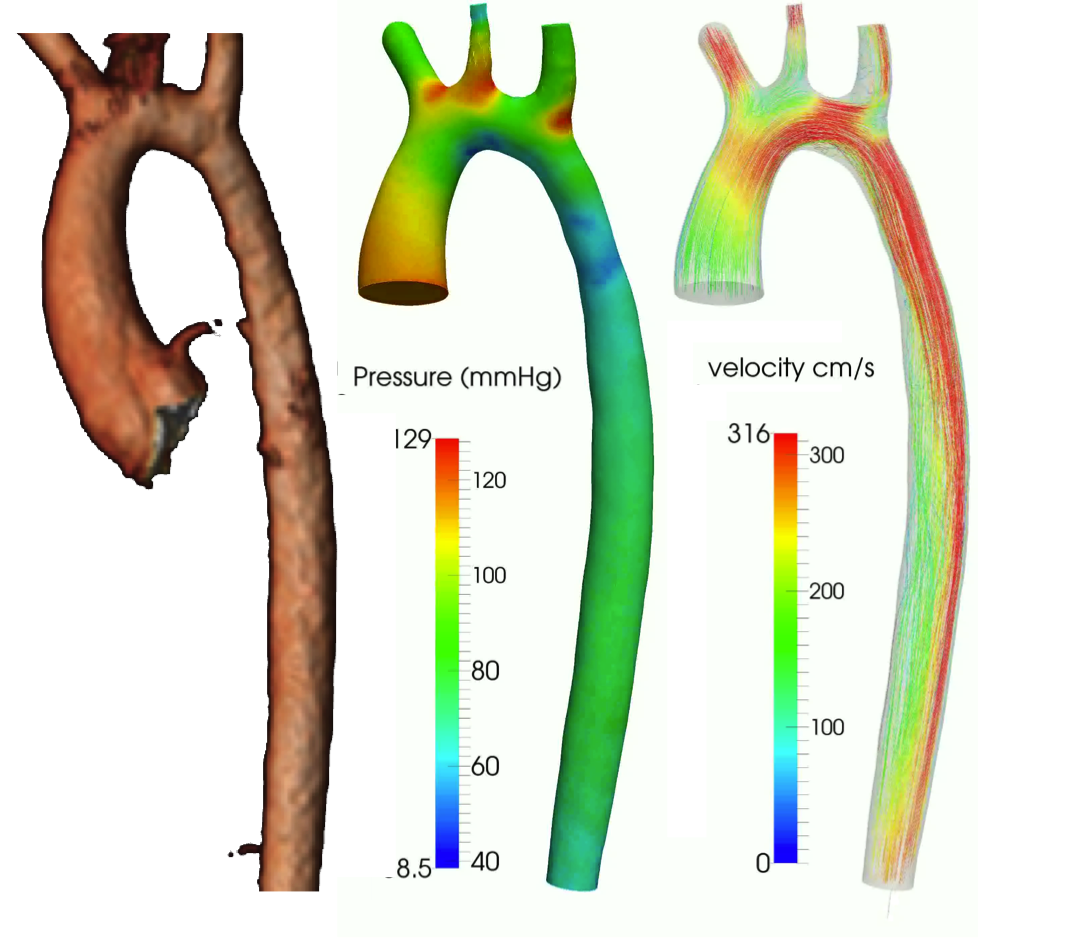 While computational fluid dynamics (CFD) has matured over the past decades for haemodynamic analysis, patient specific predictions require correct estimation of several parameters, such as material properties and boundary conditions, in the numerical models for each patient individually. This inverse problem of estimating the parameters from clinical measurements is challenging due to a) uncertainty in measurements, b) large search space of the parameters, and c) computationally expensive direct/forward problems. My research is in developing efficient methods for estimating the patient-specific parameters through sequential filtering-based (recursive Bayesian) approaches and for studying parameter identifiability.
While computational fluid dynamics (CFD) has matured over the past decades for haemodynamic analysis, patient specific predictions require correct estimation of several parameters, such as material properties and boundary conditions, in the numerical models for each patient individually. This inverse problem of estimating the parameters from clinical measurements is challenging due to a) uncertainty in measurements, b) large search space of the parameters, and c) computationally expensive direct/forward problems. My research is in developing efficient methods for estimating the patient-specific parameters through sequential filtering-based (recursive Bayesian) approaches and for studying parameter identifiability.
The image on the left shows patient-specific haemodynamic analysis performed on a case of aortic coarctation. The goal is to predict the pressure-drop across the coarctation, the clinical criterion to decide if surgical intervention is necessary. The patient-specific parameters are estimated through uncertain clinical measurements under rest and pharmacological stress conditions.
Modelling single-ventricle physiology
 Single-ventricle (SV) physiology is a congenital heart condition where only one functioning ventricle, the other being underdeveloped or hypoplastic, is present at birth. Palliative treatment includes three stages of surgery resulting in a Fontan circulation, where the SV drives the systemic circulation and the deoxygenated blood flows passively into the lungs via cavopulmonary connections (bypassing the hypoplastic chamber). As part of the translatlantic network of excellence in: Multi-scale Modeling of Single Ventricle Hearts for Clinical Decision Support, I am developing models for SV physiology, to assist clinical decision-making through virtual surgeries. The image on the right shows haemodynamic variables in a patient-specific model of pulmonary arteries (post Stage-II surgery) where the model is tuned to reproduce the clinically measured flow-split and pressure-drop.
Single-ventricle (SV) physiology is a congenital heart condition where only one functioning ventricle, the other being underdeveloped or hypoplastic, is present at birth. Palliative treatment includes three stages of surgery resulting in a Fontan circulation, where the SV drives the systemic circulation and the deoxygenated blood flows passively into the lungs via cavopulmonary connections (bypassing the hypoplastic chamber). As part of the translatlantic network of excellence in: Multi-scale Modeling of Single Ventricle Hearts for Clinical Decision Support, I am developing models for SV physiology, to assist clinical decision-making through virtual surgeries. The image on the right shows haemodynamic variables in a patient-specific model of pulmonary arteries (post Stage-II surgery) where the model is tuned to reproduce the clinically measured flow-split and pressure-drop.
Read more ...
Lumped parameter modelling of circulation
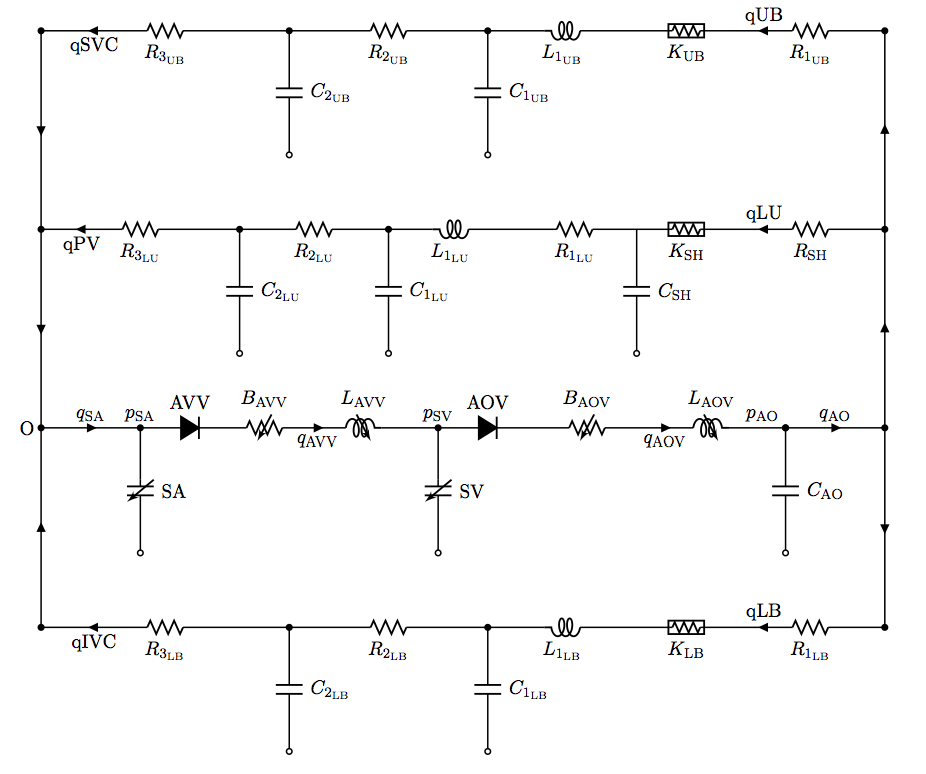 Lumped parameter models, often referred as 0D models, are a computationally efficient models to represent global circulation. These models can either be employed individually to study haemodynamics or can be imposed at the ends of 3D Navier-Stokes models to account for the remaining circulation. The latter leads to the methods of geomterical multi-scale or multi-domain modelling. I am developing lumped parameter models for regurgitant valves and closed-loop single-ventricle circulation. The figure on left shows such a lumped parameter model for Stage-I singe-ventricle physiology. The figure below shows the haemodynamic variables obtained by such a model that has been customised for an individual patient: 33 model parameters are estimated. A comparison the model output with the clinical measurements is also depicted.
Lumped parameter models, often referred as 0D models, are a computationally efficient models to represent global circulation. These models can either be employed individually to study haemodynamics or can be imposed at the ends of 3D Navier-Stokes models to account for the remaining circulation. The latter leads to the methods of geomterical multi-scale or multi-domain modelling. I am developing lumped parameter models for regurgitant valves and closed-loop single-ventricle circulation. The figure on left shows such a lumped parameter model for Stage-I singe-ventricle physiology. The figure below shows the haemodynamic variables obtained by such a model that has been customised for an individual patient: 33 model parameters are estimated. A comparison the model output with the clinical measurements is also depicted.
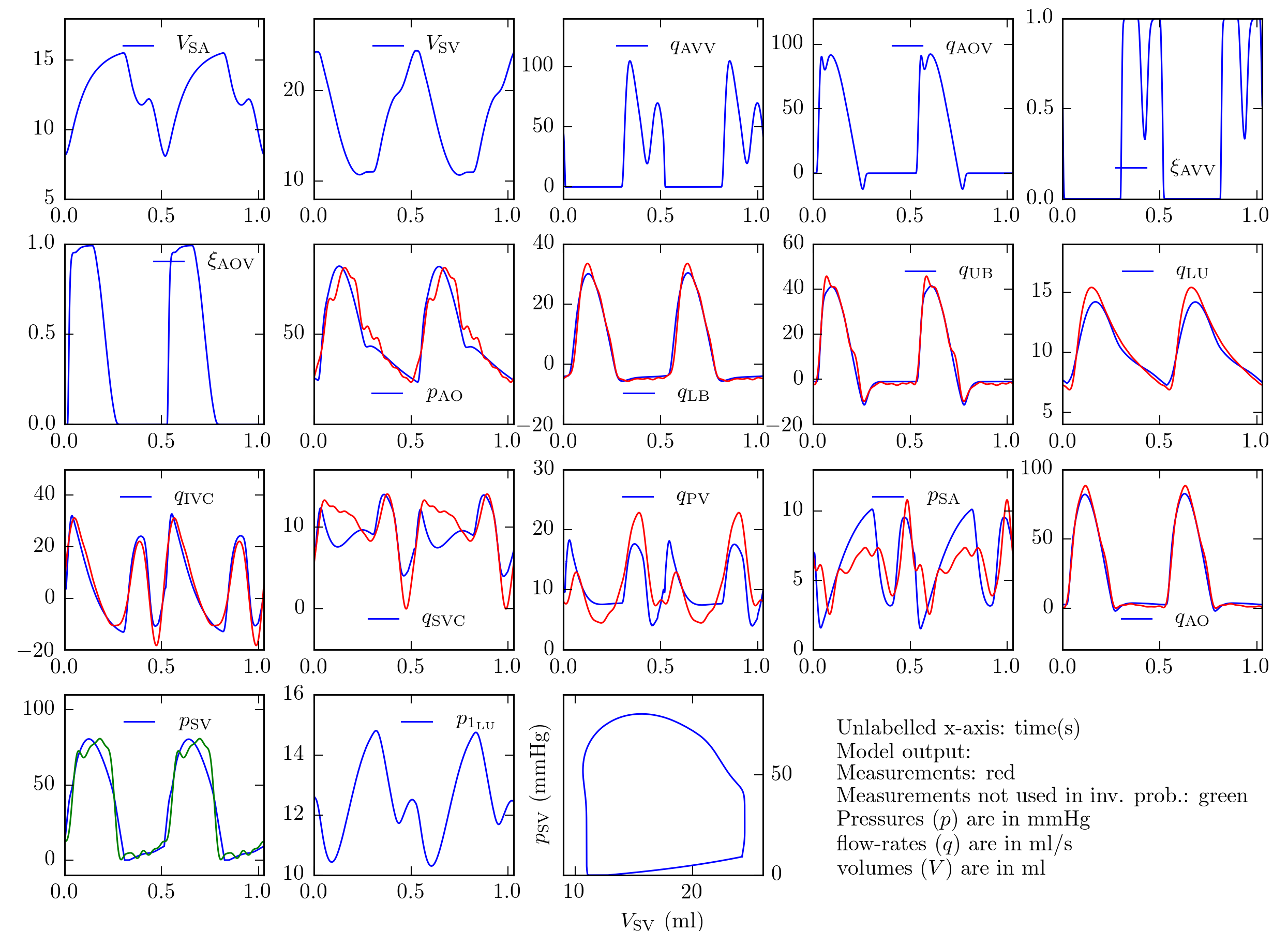
Identifiability and Information Theory
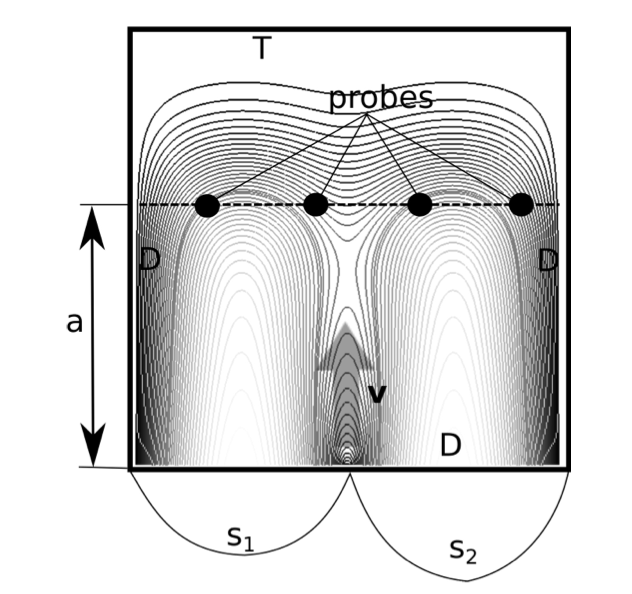 An important question in inverse problems is whether the parameters of interest can be identified from the available measurements. While several techniques have been proposed to study identifiability in systems governed by ordinary differential equations with no measurement error, a robust criterion that includes measurement uncertainty and is applicable to systems governed by partial differential equations is missing. In this area, my research is in developing a general method based on information theory, that is applicable to any dynamical system and includes measurement uncertainty, to study identifiability. In the information-theoretic framework we pose the following question
An important question in inverse problems is whether the parameters of interest can be identified from the available measurements. While several techniques have been proposed to study identifiability in systems governed by ordinary differential equations with no measurement error, a robust criterion that includes measurement uncertainty and is applicable to systems governed by partial differential equations is missing. In this area, my research is in developing a general method based on information theory, that is applicable to any dynamical system and includes measurement uncertainty, to study identifiability. In the information-theoretic framework we pose the following question
How much information does one expect to gain about the parameters of interest through noisy measurements of an observable (or a set of observables) at a given set of discrete time instants?The results are intuitively interpreted in terms of the error of a hypothetical measurement device that directly measures the parameters.
Read more ...
Non-parameteric entropy estimation
I am developing non-parameteric methods to estimate continuous differential entropy, a fundamental information-theoretic quantity. The image below shows the errors in a novel entropy estimator for a three dimensional Gamma distribution.
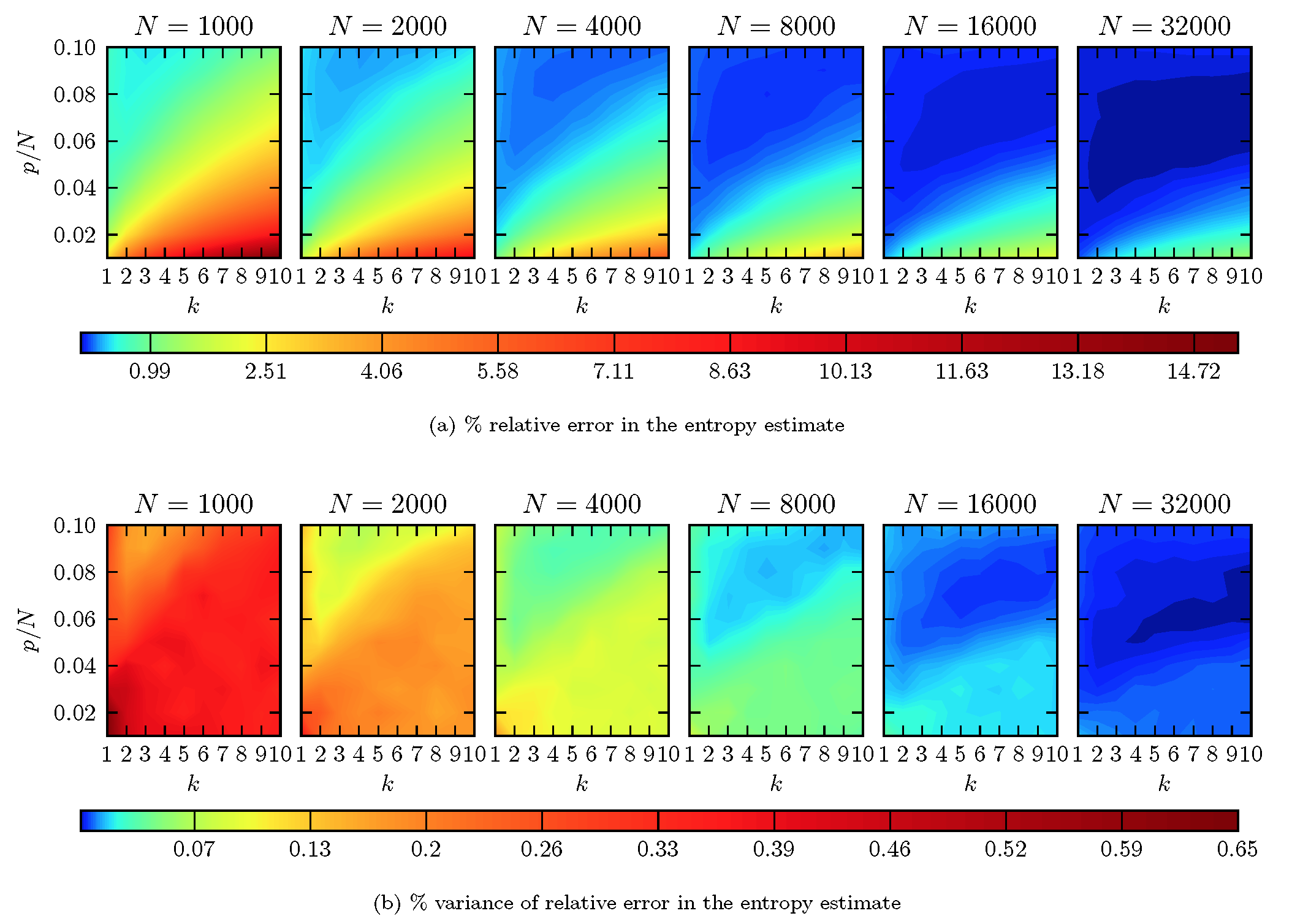
Atrioventricular valve regurgitation
Research in this area concerns assessment of haemodynamic changes caused by acute changes in atrioventricular valve regurgitation. Preliminary assessment in a patient-specific model is shown below
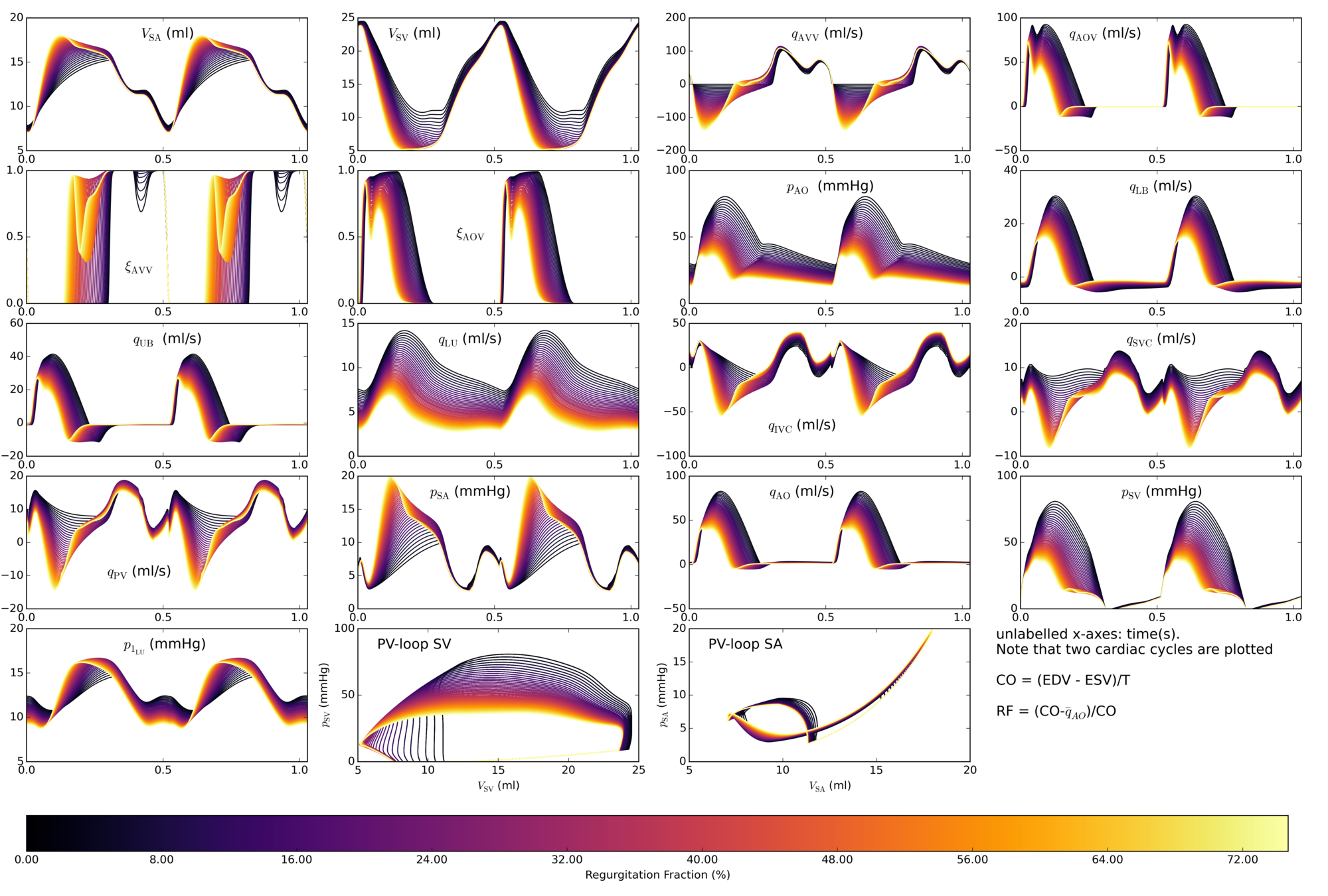
Read more ...
Virtual preload reduction
Research in this area is in simulating preload reductions tests in subject-specific models to assess ventricular function. An important element of this work concerns uncertainty quantification in both measurements and prediction of the assessment parameters.
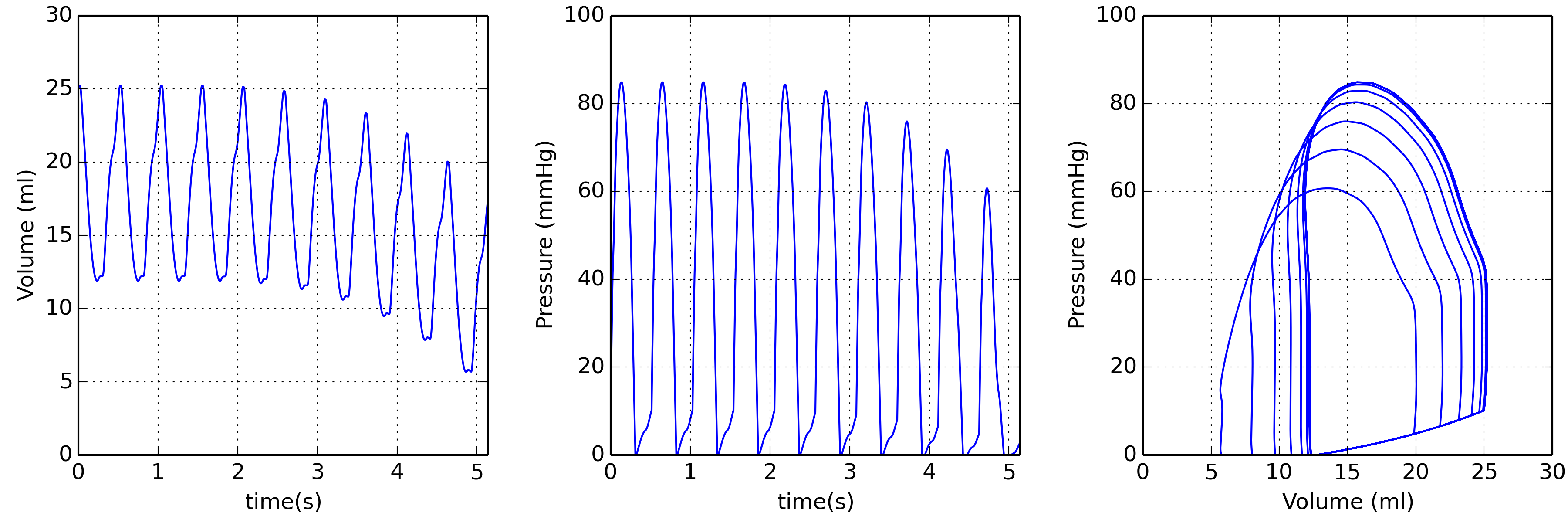
Read more and see animation ...
Read more about individual areas
-
Modelling and prediction of atrioventricular valve regurgitation
-
Multi-objective design optimisation of coronary stents
-
Patient specific haemodynamic analysis (aortic coarctation)
-
Information theory and parameter identifiability
-
Data assimilation for parameter estimation in a single-ventricle heart model.
-
Patient-specific CFD analysis (single ventricle hearts)
-
Non-parametric estimation of differential (continuous Shannon entropy)
-
Closed-loop model for single-ventricle circulation and parameter estimation
-
Virtual preload reduction to assess ventricular function